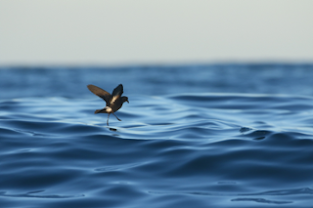Tenan, S., Moulins, A., Tepsich, P., Bocconcelli, A., Verga, A., Ballardini, M., Nani, B., Papi, D., Motta, G., Aguilar, A. S., & Rosso, M. (2023). Immigration as the main driver of population dynamics in a cryptic cetacean. Ecology and Evolution, 13, e9806. https://doi.org/10.1002/ece3.9806
Abstract: Empirical evidence about the role and interaction of immigration with
local demographic processes in shaping population dynamics is still
scarce. This knowledge gap limits our capability to derive a conceptual
framework that can be used to inform conservation actions. Populations
exposed to nonstationary environment do not converge to a stable stage
distribution, implying the need for evaluating the demographic role of
both vital rates and stage distribution using appropriate tools. This is
particularly important for species with larger generation times like
cetaceans. We explored the relative demographic role of vital rates and
population structure of a poorly known cetacean, the Mediterranean
Cuvier's beaked whale, while accounting for the exposure to
nonstationary environments.
 |
Photo: N Aguilar
|
We performed a retrospective analysis
through transient life table response experiments (tLTRE) using
demographic rates and population structure of both sexes obtained from
an integrated population model. The contribution of immigration to
variation in realized population growth rates was 4.2, 7.6, and 12.7
times larger than that of female apparent survival, proportional
abundance of breeding females with a 2-year-old calf, and proportional
abundance of breeding females with a 3-year-old calf, respectively.
Immigration rate and proportional abundance of breeding females with a
2- or 3-year-old calf explained, respectively, 65% and 20% of total
temporal variability in realized population growth rates. Changes in
realized population growth rate between successive years were mainly
driven by changes in immigration and population structure, specifically
the proportional abundance of breeding females with a 2-year-old calf.
Our study provides insight into the demographic processes that affect
population dynamics and in a cryptic cetacean. We presented an
analytical approach for maximizing the use of available data through the
integration of multiple sources of information for individuals of
different distinctiveness levels.







